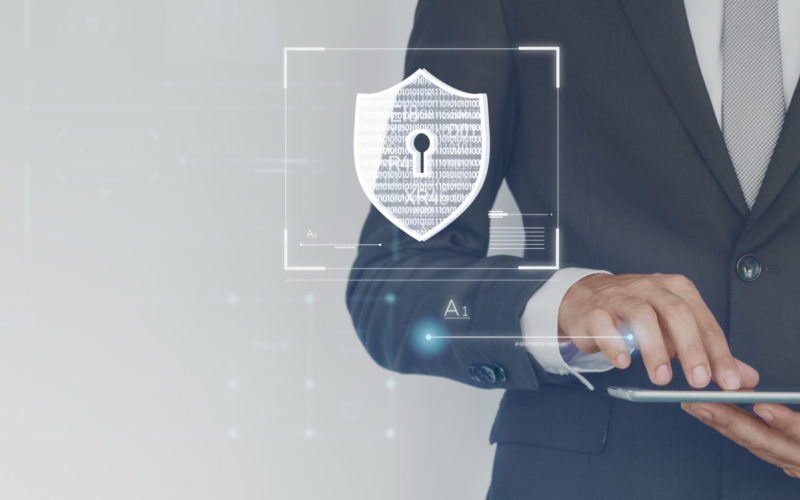In an increasingly digitally-reliant landscape, your business networks are key. They support your software platforms, store consumer and company data, and keep your websites and online tools functioning. Protecting this vital infrastructure must be a priority.
There are various ways businesses can bolster their digital security. Nevertheless, it is important to understand the specific threats you’re likely to face. This helps you not just recognize the hazards and respond to them effectively, but it also empowers you to put relevant preventative safeguards in place. With some planning and focus, you can strengthen your network security and keep your enterprise productive.
Weak Planning
The first common threat to security is a lack of preparation. Too many companies treat cybersecurity as an afterthought in their operations. This can lead to significant security gaps, leaving companies exposed to breaches and other hazards.
The first step in holistic cybercrime protection is to develop a comprehensive network security plan. Review your current cybersecurity policies to get a good understanding of how well they fit the threats, needs, and resources of your organization at the moment. From here, you can identify areas that might need to be updated to fit the current security climate.
It’s also wise to determine whether you may need to hire new staff with specific information technology (IT) or security expertise so you can navigate threats. Particularly if you intend to start utilizing more complex or tailored software tools in your organization, having an IT resource on-site can help you better prepare for and apply relevant measures.
Additionally, maintaining regular communication with your staff on current and changing network security plans is essential. When your employees don’t fully understand the threats and their responsibilities, it’s very easy for them to overlook problems. Ensure the cybersecurity section of your employee handbook is regularly updated. Email staff informed about these updates as they occur, including a link to where the handbook is stored on the cloud or intranet.
External Attacks
Many of the most prevalent network security threats will come from outside of your organization.
After all, hacking can be quite lucrative for cybercriminals and be an effective tactic even for those who just want to cause disruption.
It’s also vital to remember that cybercriminals don’t just target big businesses. In 2021, 61% of small to medium-sized businesses were victims of cyber attacks. Part of the reason for this is that hackers will often assume that smaller businesses have weaker security frameworks. Therefore, you must understand the threats and take protective measures for each.
Some of the key external threats include:
- Malware: This is a popular form of code that is designed to infect and disrupt any systems it is downloaded to. There are various different forms, including ransomware — which locks legitimate users out of the system — and spyware that can transmit company and consumer data to hackers.
Malware is usually embedded in a link and downloaded when someone clicks the link. Protecting against it benefits from strong antivirus software that sandboxes malicious code. You can also segment your networks to ensure any viruses that get through your antiviruses and firewalls have limited access to sensitive data.
- Phishing: A form of social engineering attack, phishing involves hackers breaching your networks by tricking employees into letting them in. Most often, they will send emails that are designed to look as though they’re from legitimate organizations. Some encourage the user to click on links containing malware, while others may request “confirmation” of account credentials or passwords.
As with any social engineering attack, the best way to prevent phishing is through staff training. Help them to understand what phishing emails look like and how to deal with them. Installing email protection software can also help spot potential phishing emails and place them in a secure location for review or deletion by IT personnel.
These are far from the only external attack methods, and the tactics develop frequently. This makes it particularly important for your company to adopt robust threat intelligence protocols. The cybersecurity hazards can also be unique to each organization. The earlier you can spot potential signs of trouble for your specific business or industry, the better you can design a plan of action and take steps to counter them.
Your strategy should include regularly reviewing reliable sources of data on current hazards. This might include local and national news, federal government agency websites — such as the Cybersecurity Infrastructure and Security Agency (CISA) — and even event reports from social media. With access to this information, you can analyze how emerging threats could impact your business, and work with your IT staff to navigate them.
Internal Risks
Some significant network security risks will come from inside your organization. This isn’t always nice to think about, as you naturally want to trust your staff and other stakeholders. Nevertheless, whether from malicious intent or negligent missteps, staff behavior can make your systems more vulnerable to security breaches.
From the malicious perspective, the most common issues you’ll face will revolve around fraudulent access to data or resources. Theft of intellectual property as industrial espionage can also be a factor. You might even find staff members sabotage systems for ideological reasons or to express their dissatisfaction.
Mitigating these malicious threats requires robust internal network monitoring. Artificial intelligence (AI) driven threat monitoring software can be useful. These tools constantly track the use of your networks and use machine learning algorithms to identify unusual behavior. The software can then alert management to take relevant action. Maintaining strong access controls to different types of company data can also minimize the bandwidth for internal breaches.
With respect to negligent practices, regular cybersecurity training is a vital best practice. Empowering staff with the knowledge to behave in digitally hygienic ways in all their tasks is essential. This includes simple things like regularly changing complex passwords and using virtual private networks (VPNs) when performing online tasks outside of the office. Updating this knowledge as threat levels change or staff take on new roles in the business helps minimize errors and behavioral issues.
Conclusion
Maintaining solid business network security practices helps to minimize beaches and the disruptions they cause. This must include committing to tailored planning processes alongside being vigilant of both internal and external threats. It’s also vital to invest in experienced cybersecurity staff. As threats develop and become more prevalent, having experts on staff can improve the strength of your planning and the agility of your response to breaches.
⸻ Author Bio ⸻

Sam Bowman enjoys writing about people, tech, business, and how they merge. He enjoys getting to utilize the internet for the community without actually having to leave his house. In his spare time, he likes running, reading, and combining the two in a run to his local bookstore.












